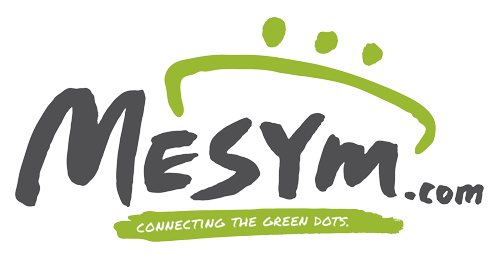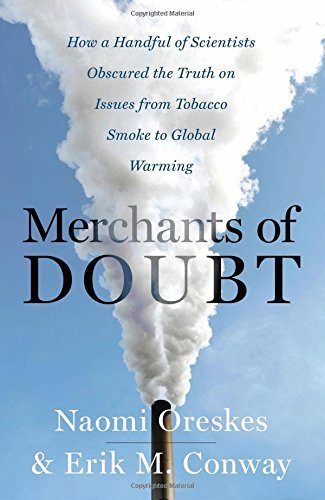The information for the article below comes from Naomi Oreskes‘ book Merchants of Doubt—How a Handful of Scientists Obscured the Truth on Issues from Tobacco Smoke to Global Warming. Extracts from film Thank you for Smoking were used to illustrate the Tobacco Strategy clearly.*
What is the “Tobacco Strategy”
In her book Merchants of Doubt, Naomi Oreskes coined the term “The Tobacco Strategy”, referencing the strategy employed by the tobacco industry aimed at stopping any regulation on sales or consumption of cigarettes.
Whenever there is any controversial issue, there will be an argument about its positive/negative impacts. People will just postpone action until one of the competing sides has won the argument battle and the controversy is over, and only then worry about the issue. So, the “Tobacco Strategy” is aimed, as Naomi Oreskes says, at “maintaining the controversy” and “keeping the debate alive”. It doesn’t matter if there really is an argument going on or not. All that matters is for people to have the impression that there’s an argument going on.
(And indeed, as it was the case with cigarettes as it is now with climate change, the debate has already been defined long time ago – 97% scientific consensus with regards to anthropogenic climate change is no controversy anymore).
This image from the film “Thank you for Smoking” explains the strategy clearly:
In order to keep the debate always active, the tobacco industry created their own Scientific Institutes to research on the harm caused by cigarettes and, surprise surprise, they didn’t find any link! (Of course there’s no conflict of interests here, right?) Then, these bogus scientific data would be continually cited by “experts” and fed into mass media to promote their claims. The media would play a complicit role, by reporting these claims as part of an ongoing scientific debate, even if they had already been refuted by mainstream scientific literature.
How does the tobacco industry benefit from keeping the debate alive? Taken from The Environment Site | Tobacco Strategy:
The Tobacco Strategy is predicated upon buying time by sowing doubt. Given enough time, the truth must prevail so it is impossible to win these battles and the Contrarians are fully aware of this. However, if the inevitable is delayed by several decades, that is several decades of profit in the coffers of the industries that sponsor this strategy. Thus, profit is the motive and “The Tobacco Strategy” has been shown to be a very profitable strategy.
And indeed, maintaining the controversy is not difficult at all:
Sowing doubt is extremely easy since there is always a lack of certainty in the scientific community. Scientists state hypotheses and develop evidence to support the hypotheses but can never state with 100% certainty that a hypothesis is true. However, even when the confidence expressed by the scientific community is established to be 98%, there remains a two percent uncertainty with which doubt can be sowed among the gullible public.
Blaming the Sun: how “The Tobacco Strategy” was used to deny climate change
The Tobacco Strategy proved so successful that the chemical industries would later also use it with regard to acid rain, the ozone hole and DDT and, since at least 1989, climate change. The evidence to prove this assertion has been painstakingly collected by Naomi Oreskes during the 5-year long research for her book “Merchants of Doubt” and printed in the book’s chapter The Denial of Global Warming, under section Blaming the Sun. The text below was extracted and edited from this section. The whole chapter is also freely available online.
In 1989 the Marshall Institute issued its first report attacking climate science. Their initial strategy wasn’t to deny the fact of global warming, but to blame it on the Sun. They produced a book entitled “Global Warming: What Does the Science Tell Us?”. Echoing the tobacco industry strategy, they claimed that the report would set the record straight on global warming.
The central claim of the Marshall Institute report was that the warming didn’t track the historical increase in CO2. The majority of the warming had been prior to 1940 — prior to the majority of the carbon dioxide emissions. Then there was a cooling trend through 1975, and a return to warming. Since the warming didn’t parallel the increase in CO2, it must have been caused, they claimed, by the Sun. They argued that the Sun had entered a period of higher energy output during the nineteenth century, and that this solar output increase was responsible for the climate warming to date. They also contended that the warming trend was almost over, and things would soon begin to cool off.
Had there been cooling between 1940 and 1975? Yes, but the Marshall report misrepresented it. The Institute’s source for their diagram was an article by James Hansen’s team, so it looked eminently credible. It looked like they were relying on peer-reviewed science. But they had cherry-picked the data using only one diagram out of six that were relevant. Hansen and his group had explored what cause or combination of causes best explains the observations, and their answer was CO2 + volcanoes + the Sun. And since there hadn’t been any solar output increase in the mid-twentieth century, only CO2 explained the recent warming. However, the Marshall report only shows the top portion of Hansen’s charts, making it appear as if only the Sun mattered.
This set of charts was part of an article by James E. Hansen at the Goddard Institute for Space Studies. Hansen’s team argued that the bottom right image best reflected the behavior of the real Earth—with ocean mixing to 1,000 meter depth, solar irradiance, volcanic dust and aerosols, and CO2 all playing roles. The Marshall Institute’s version included only the top left portion of the diagram, leaving the impression that CO2 didn’t matter. Source: Naomi Oreskes – Merchants of Doubt, chapter 6: The Denial of Global Warming, section: Blaming the Sun.
There was an even larger problem with the Marshall analysis that climate modeler: if the report were right that the climate was extremely sensitive to small changes in solar output, then it meant that the climate would also be extremely sensitive to small changes in greenhouse gases.
The Marshall Institute simply can’t have it both ways: they can’t argue on the one hand that small changes in solar energy output can cause large temperature changes, but that comparable changes in the energy input from greenhouse gases will not also produce comparable large signals. Either the system is sensitive to large scale radiative forcing or it is not.
The IPCC explicitly addressed — and rejected — the Marshall Institute argument for blaming the Sun. But the IPCC’s refutation didn’t matter to the Marshall Institute. In 1991, they reiterated their argument in a longer version, and in October 1992 they took it on the road to the World Petroleum Congress, where they launched a full frontal attack on the IPCC. Meanwhile, the Cato Institute distributed an uncorrected version of the graph printed in the original Marshall Institute white paper—the one that showed only the top part of Hansen’s graph.
They were proud of the results. In a February 1991 letter to the vice president of the American Petroleum Institute, Robert Jastrow from the Marshall Institute crowed, “It is generally considered in the scientific community that the Marshall report was responsible for the Administration’s opposition to carbon taxes and restrictions on fossil fuel consumption.” Quoting New Scientist magazine, he reported that the Marshall Institute “is still the controlling influence in the White House.”
*In the article above, I left plenty of valuable information out from Merchants of Doubt, to better accommodate for web reading. If you have the chance, please read this book in its entirety. Thank you for Smoking, even though a comedy, manages to portray the Tobacco Strategy accurately, so it is a valuable source of information by itself.
- Naomi Oreskes
- Merchants of Doubt
- Thank you for Smoking









